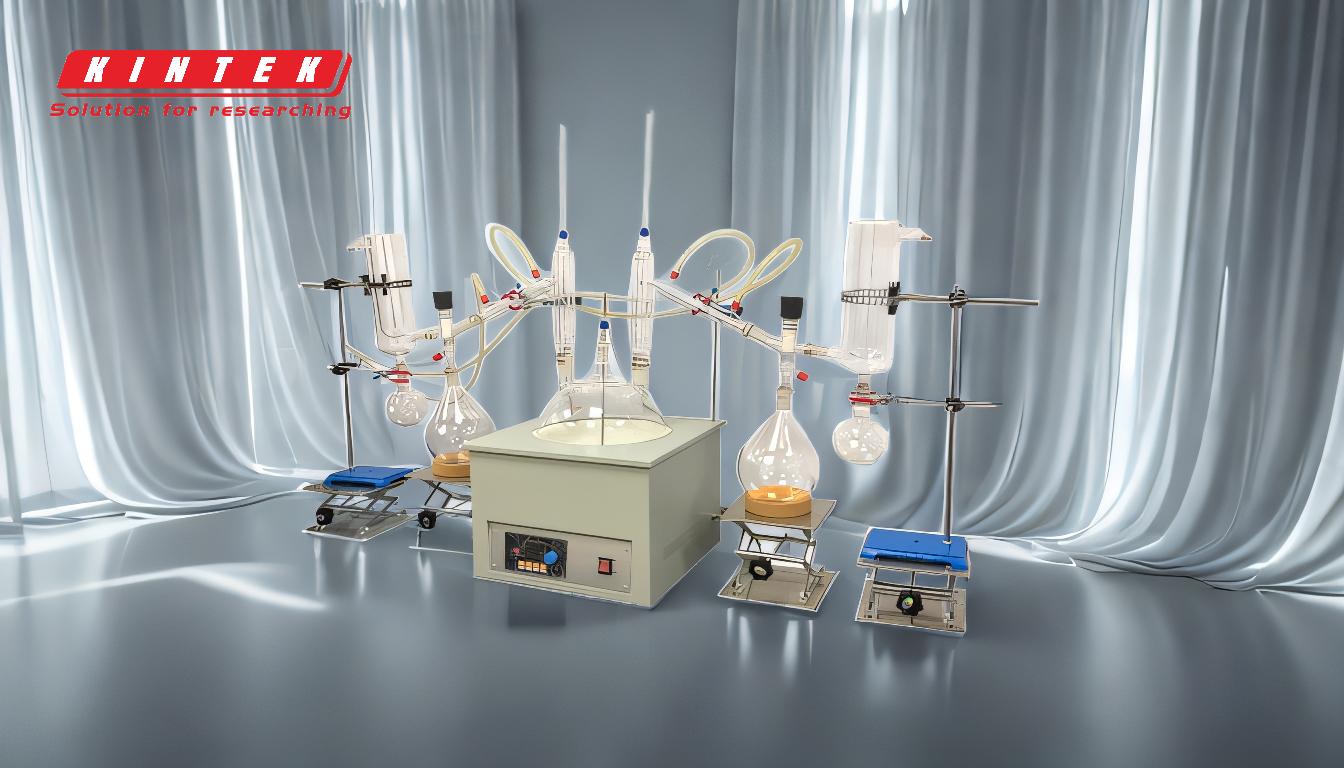Simple distillation is a fundamental separation technique used to purify liquids based on differences in their boiling points. The efficiency and effectiveness of this process are influenced by several factors, including system vacuum value, heat pot temperature, speed of the evaporation bottle, and cooling medium temperature. These factors collectively determine how well the distillation process separates the desired components from the mixture. Understanding these variables can help optimize the distillation process for better yield, purity, and energy efficiency.
Key Points Explained:

-
System Vacuum Value:
- Definition: The vacuum value refers to the pressure level maintained within the distillation system. A lower pressure (higher vacuum) reduces the boiling points of the components, allowing distillation at lower temperatures.
-
Impact:
- Lower boiling points mean less thermal energy is required, which can prevent the degradation of heat-sensitive compounds.
- The vacuum level must balance the system's pressure resistance and distillation efficiency. Too high a vacuum can strain the equipment, while too low may reduce efficiency.
-
Components:
- Vacuum Pump: The power and efficiency of the vacuum pump directly affect the achievable vacuum level.
- Sealing System: Materials like PTFE (Polytetrafluoroethylene) are preferred for sealing rings and vacuum tubes due to their superior wear and corrosion resistance compared to rubber.
-
Heat Pot Temperature:
- Definition: The temperature of the heat pot (or heating bath) controls the rate at which the mixture is heated.
-
Impact:
- Higher temperatures increase the evaporation rate but can lead to thermal degradation of sensitive compounds.
- Lower temperatures may slow down the distillation process but are safer for heat-sensitive materials.
- Optimization: The temperature should be set just above the boiling point of the target component under the system's vacuum conditions to ensure efficient evaporation without unnecessary energy consumption.
-
Speed of the Evaporation Bottle:
- Definition: This refers to the rotational speed of the evaporation flask, which affects the surface area of the liquid exposed to heat and vacuum.
-
Impact:
- Higher speeds increase the surface area, enhancing evaporation rates.
- However, excessive speed can cause foaming or splashing, leading to contamination of the distillate.
- Optimization: The speed should be adjusted to maximize evaporation while maintaining a stable and controlled process.
-
Temperature of the Cooling Medium:
- Definition: The cooling medium (usually water or a refrigerant) in the condenser is responsible for condensing the vapor back into liquid form.
-
Impact:
- Lower cooling temperatures improve condensation efficiency, ensuring that more vapor is converted back to liquid.
- However, excessively low temperatures can cause the distillate to solidify or become too viscous, potentially clogging the system.
- Optimization: The cooling medium temperature should be set to ensure efficient condensation without causing operational issues.
-
Distillation Efficiency and Sample Throughput:
- Definition: Distillation efficiency refers to how effectively the process separates and purifies the desired components.
-
Impact:
- Higher efficiency allows for more samples to be processed in a given time, which is crucial for laboratories handling large volumes.
- Efficiency is directly influenced by the factors mentioned above (vacuum, heat, rotation speed, and cooling).
- Optimization: Balancing all these factors ensures that the distillation process is both efficient and effective, maximizing throughput without compromising quality.
By carefully controlling and optimizing these factors, one can achieve a more efficient and effective simple distillation process, leading to better separation, higher purity, and increased productivity.
Summary Table:
| Factor | Definition | Impact | Optimization |
|---|---|---|---|
| System Vacuum Value | Pressure level in the system; lower pressure reduces boiling points. | Lower boiling points save energy, but extreme vacuum can strain equipment. | Balance vacuum level to avoid equipment strain while maintaining efficiency. |
| Heat Pot Temperature | Temperature of the heating bath controlling evaporation rate. | Higher temps increase evaporation but risk thermal degradation; lower temps are safer but slower. | Set temperature just above the boiling point under vacuum conditions. |
| Evaporation Bottle Speed | Rotational speed affecting liquid surface area exposed to heat and vacuum. | Higher speeds increase evaporation but may cause foaming or splashing. | Adjust speed to maximize evaporation without contamination. |
| Cooling Medium Temperature | Temperature of the cooling medium in the condenser. | Lower temps improve condensation but may cause clogging if too low. | Set cooling temp to ensure efficient condensation without operational issues. |
| Distillation Efficiency | Effectiveness of separating and purifying components. | Higher efficiency increases sample throughput and purity. | Balance all factors to maximize throughput and quality. |
Ready to optimize your distillation process? Contact our experts today for tailored solutions!












